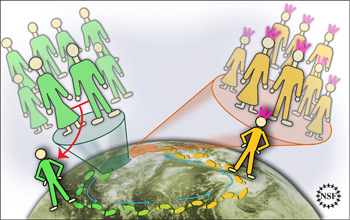
© Daily MailThe discovery of the brain cell which determines our sleep patterns could pave the way for the introduction of a pill to beat jetlag
A pill that cures jet lag is a step closer today, after scientists discovered how signals from the brain control our biological clocks.
Tests on mice suggested the human body clock - controlled by a region of the brain called the suprachiasmatic nuclei - does not constantly fire electrical pulses to regulate our sleeping patterns, as was previously thought.
Instead, it fires at dusk and remains inactive during the night, then stirring back to life at daybreak.
The British and American team, whose research is published in the journal
Science, say it could lead to treatments for illnesses that are influenced by the body clock, such as cancer and Alzheimer's, as well as perking up frequent flyers or nightshift workers.

